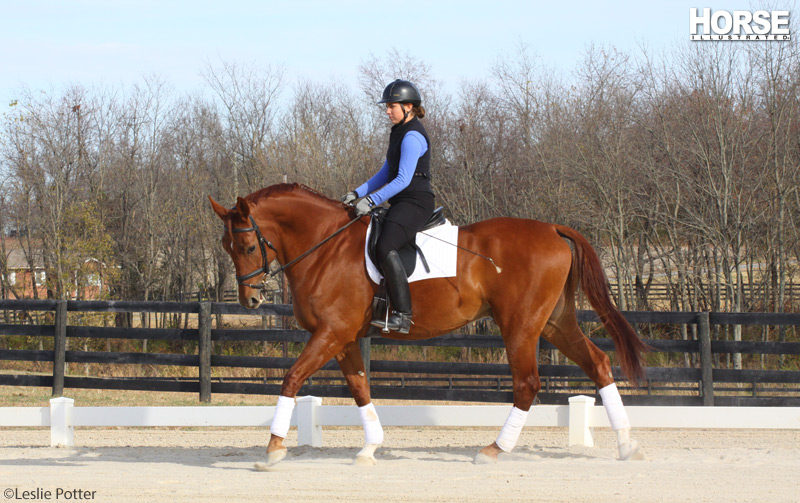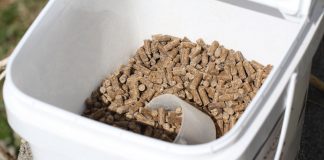In our Ask the Vet column, Dr. Lydia Gray answers your horse-health questions at horseillustrated.com/AskTheVet. Got a question for Dr. Gray? Send it to hc-editor@luminamedia.com and use subject line “Ask the Vet.”
Q: My horse seems to have normal, healthy joints, but I know joint health becomes an issue for many horses as they get older. So my question is, how do I prevent joint degeneration in the first place?

Ensuring your horse has plenty of warm-up and cool-down time is one way to help preserve his joint health. Photo: Leslie Potter.
A: Good for you for being proactive about your horse’s joint health! Let’s go ahead and call a spade a spade, meaning joint “degeneration” is the same thing as degenerative joint disease (DJD) or osteoarthritis. DJD is defined as progressive and permanent deterioration of articular cartilage, the specific type of cartilage that lines the ends of bones where they come together to form a joint, such as your horse’s fetlock or ankle. Healthy articular cartilage provides a smooth, slippery surface that allows free movement and contributes to the shock-absorbing properties of the joint. As DJD sets in, articular cartilage becomes compromised, which disrupts the normally smooth surface, causing stiffness and discomfort.
Interestingly, a 1999 study published in the Equine Veterinary Journal identified arthritic changes in a herd of wild mustangs, which led the researchers to conclude that arthritis was a natural part of the aging process in horses. As you point out, senior horses are more likely to show arthritic changes, so age is definitely a factor. But so are acute trauma or sudden injury, conformation/genetics, foot care and footing, and workload–or the frequency, duration, and intensity of exercise. In fact, it is this repetitive, low-grade trauma experienced during years of athletic competition that leads to DJD in the older equine.
While there is no sure-fire way of preventing arthritis altogether, by working with your veterinarian, farrier, and trainer (or barn manager if you board your horse) you may be able to help keep your horse going strong for as long as possible. Make sure your horse is turned out as much as possible for free exercise and that his controlled exercise includes both schooling and conditioning components on safe surfaces with lots of time for warm-up and cool-down.
Work with your farrier to ensure his trimming (and shoeing if necessary) is appropriate for his conformation and workload plus follows a suitable schedule. Ask your veterinarian for suggestions on maintaining joint health too, as your options include the judicious use of injectable medications, prescription non-steroidal anti-inflammatory drugs when necessary, and over-the-counter supplements that contain ingredients like Mother Nature’s “Big Three”: glucosamine, chondroitin sulfate, and hyaluronic acid or HA. Why not “stack the deck” in your horse’s favor by providing the building blocks of healthy joint tissue so that when they need these ingredients to build cartilage, synovial fluid, and other joint components, they’re already on board!






